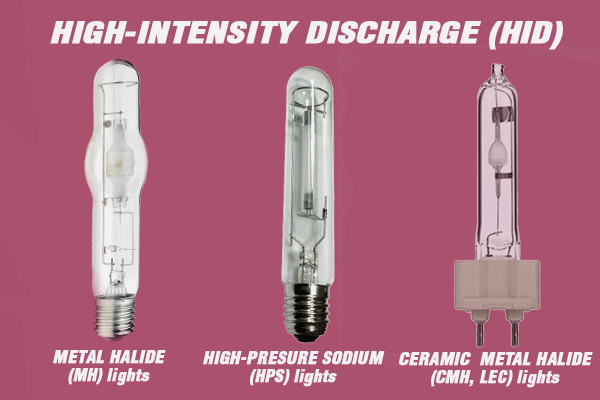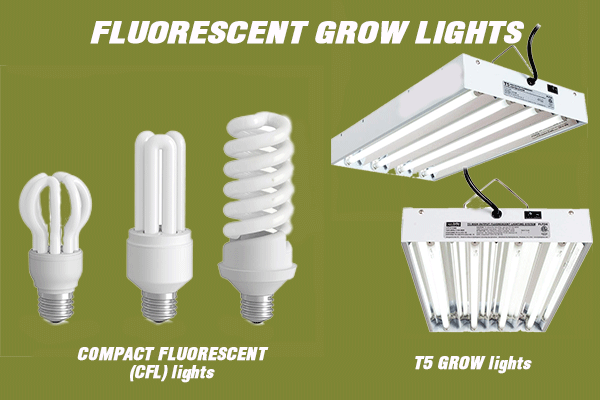The Comprehensive Grow Light Guide For Autoflowering And Feminized Cannabis
Published :
Nov 6, 2019
Categories :
Cannabis cultivation

Let's look into the various types of grow lights for feminized and autoflowering cannabis plants, as well as their pros and cons. Feel fully prepared to start your indoor grow with help from this guide!
Along with sourcing quality seeds and minding your feeding and watering schedule, nothing is as vital for your indoor grow as your lighting setup. After all, cannabis needs a lot of light—much more than most other plants—particularly during flowering. Your cannabis plants turn light into energy to thrive, and to ultimately reward you with an abundance of potent buds at harvest time.
When growing weed outdoors, you normally don’t need to worry as there is nothing better than the power of the sun. But when growing indoors, the right type of light can make all the difference in how your crop turns out.
WHAT TYPES OF GROW LIGHTS ARE AVAILABLE?
When you first get started growing indoors, the sheer variety of lighting options can feel quite overwhelming. Should you go ahead and use that HID that came with your grow tent, or should you invest in an LED light panel? And what on earth is the difference, aside from price? To answer these questions, let’s begin by looking at the various types of cannabis grow lights you can find on the market today.
HIGH-INTENSITY DISCHARGE (HID) LIGHTS
HID lights are the traditional cannabis grow lights used by indoor growers. However, LED lights are slowly beginning to take over as the system of choice (more on that later). Still, many growers stand by HID lights, as they have a proven history of rendering exceptional results. Many times, a simple HID lighting system and a reflector come as part of a grow tent kit, making it a viable option for first-time indoor cultivators.
Under the HID umbrella, there are several different varieties of grow lights:
• Metal halide (MH) lights
Metal halide (MH) lights emit a more “blueish” spectrum of light optimal for robust growth during the vegetative phase. When the flowering phase of cannabis starts, growers will normally switch out their MH lights for HPS.
• High-pressure sodium (HPS) lights
High-pressure sodium bulbs are used to support optimal bud production during bloom by emitting a yellow/orange spectrum of light similar to street lamps. HPS lights are still top-notch when it comes to growing quality bud, although they tend to generate a lot of heat.
• Ceramic metal halide (CMH, LEC) lights
LEC (light-emitting ceramic) and CMH (ceramic metal halide) are HID lights that use ceramic instead of the quartz used for a regular metal halide lamp. The ceramic allows for higher temperatures and somewhat better efficiency (10–20%) compared to regular HID lamps.

LIGHT-EMITTING DIODE (LED) GROW LIGHTS
Previously, LEDs weren’t exactly suitable for “serious” growing as their intensity and light penetration weren’t all that great. How things have changed! Today, LED technology has advanced so much that it now rivals or even surpasses HID in terms of both performance and cost-effectiveness. LEDs are arguably the most popular style of grow lights used by hobby growers today.
• Traditional “purple” LED lights
These somewhat older LED lights are still among the most commonly used for growing cannabis. They normally consist of a number of single LEDs spread over a compact panel affixed with a fan for cooling. These panels are often a mix of red and blue LEDs (although some have white and/or UV LEDs added), which emits a purplish light, hence the name. Some variants combine red and blue single LEDs with COB LEDs.
• COB LEDs
COB means “chip on board”. This is a newer and larger type of LED system where each chip holds several individual LEDs. With many LEDs condensed into a smaller area, COBs can provide greater light intensity compared to other LEDs. The most well-known manufacturer of quality COB LEDs is CREE, although there are now other competitors like Citizen and Luminus. Manufacturers of COB-based grow lights often outfit them with fans and lenses or reflectors.
• Spread-style LED lights
Spread-style LEDs are a rather new type of grow light that combines the advantages of traditional LED panels with those of COBs. These lights utilise many smaller LEDs spread out over a large surface area. Among these spread-style LED lights are the very popular Quantum Boards, as well as other, similar types of setups like spider-style grow lights and rack-style lights.

FLUORESCENT GROW LIGHTS
You may recognise fluorescent lights due to their popularity in everyday life. They were the first “low-energy” lights introduced for the home some decades ago, and are available in different shapes such as spirals and tubes. Their light is not very intense, so they’re not optimal for flowering cannabis (unless you use large T5 lights in a ScrOG), but they make decent seedling and vegging lights.
• Compact fluorescent lights (CFL)
Before LED lights became popular, CFLs were the energy-saving alternative to regular incandescent light bulbs, as they use the same type of socket. They are an easy and simple way to get some light into your grow room, as long as you only need a small to moderate amount; again, for seedlings or vegging plants.
• T5 grow lights
T5 grow lights are bigger than CFLs as they often come in a panel with several tubes. They make great seedling and vegging lights; this is why you can often find them in commercial greenhouses.

WHAT ARE THE PROS AND CONS OF EACH TYPE OF GROW LIGHT?
Although we’ve touched on some of the advantages and drawbacks associated with each type of lighting setup, below we offer a quick and simple breakdown of the pros and cons of HIDs, LEDs, and fluorescent lights.
HIGH-INTENSITY DISCHARGE (HID) LIGHTS: PROS & CONS
 PROS
PROS
• Cheaper than LED lights outright.
• Very efficient for flowering and can give you the best yields per watt.
• Still very common and relatively simple and uncomplicated to set up and use.
 CONS
CONS
• HID lights create a lot of heat, so you may require additional cooling in your grow room or tent.
• Unlike fluorescent or LED lights that are “plug in and grow”, HID lights may require additional parts such as a reflector and a ballast.
• You will normally want to swap out your HID bulbs based on the stage of growth. You will get the best results by using MH lights for vegging and HPS lights for flowering.
• HIDs have a limited lifespan. The intensity of HID lamps decreases over time, so you will need to replace them every year or so.
• They use more electricity compared to LED grow lights, so the running costs for HID are greater long-term.
LED GROW LIGHTS: PROS & CONS
 PROS
PROS
• Good LED lights, such as top-of-the-line COB lights, can offer the most power for their efficiency compared to other grow lights.
• They produce less heat than HID lights, which means fewer cooling requirements.
• Many LED grow lights come in a compact panel and don’t require anything else for you to start growing.
 CONS
CONS
• Cheaper LED light panels can’t match the yield-boosting potential of HIDs or high-quality LEDs, but they’re getting there.
• May need some trial and error to find the correct distance between your lights and the canopy.
• Cheap, low-quality LEDs are beginning to proliferate online, offering vastly subpar quality.
• The lack of heat generated by LEDs can be an issue when higher temperatures are desired, such as during a winter grow.
FLUORESCENT GROW LIGHTS: PROS & CONS
 PROS
PROS
• Affordable and widely available.
• Use very little energy, even less than some LEDs.
• Optimal light spectrum for seedlings and vegging.
• They use standard sockets, so you can easily use them in place of normal light bulbs.
• Don’t produce much heat, so you can move your plants closer to them.
• Excellent for ScrOG and similar techniques.
 CONS
CONS
• Not very efficient when used for flowering.
• As their light is not very intense, it doesn’t penetrate far down. Because of that, fluorescent lights are better suited for shorter plants.
AUTOFLOWERS AND LIGHT: WHAT YOU SHOULD KNOW
Unlike feminized photoperiod cannabis, autoflowers do not rely on the light schedule to start flowering. Their growing stages (vegging and flowering) are instead determined by the age of the plant. Autoflowers will start to flower on their own after about four weeks of vegetative growth. As such, growers can just keep their autoflowers under a fixed light cycle of 18–24 hours of light per day all the way from seed to harvest.
What works for feminized photoperiod plants will normally also work for autoflowers. And just as you would switch your HID bulbs from MH to HPS for flowering, most LEDs require you to flick a switch to change the light from its vegging spectrum to flowering. Although you don’t need to change the duration of light your plants receive, you can achieve better yields by changing the type of light to support each stage of growth. So, if your grow light has such an option, make sure you use it. However, a lot of grow lights, including “full spectrum” LED lights, are suitable for all stages of growth, so you won’t need to change anything at all.






































